Habring² Perpetual-Doppel – Celebrating 15 Years of Austrian Watchmaking with a QP-Rattrapante (Live Pics)
A Little Bit of Eternity... The Habring² Doppel Felix crowned with a perpetual calendar.
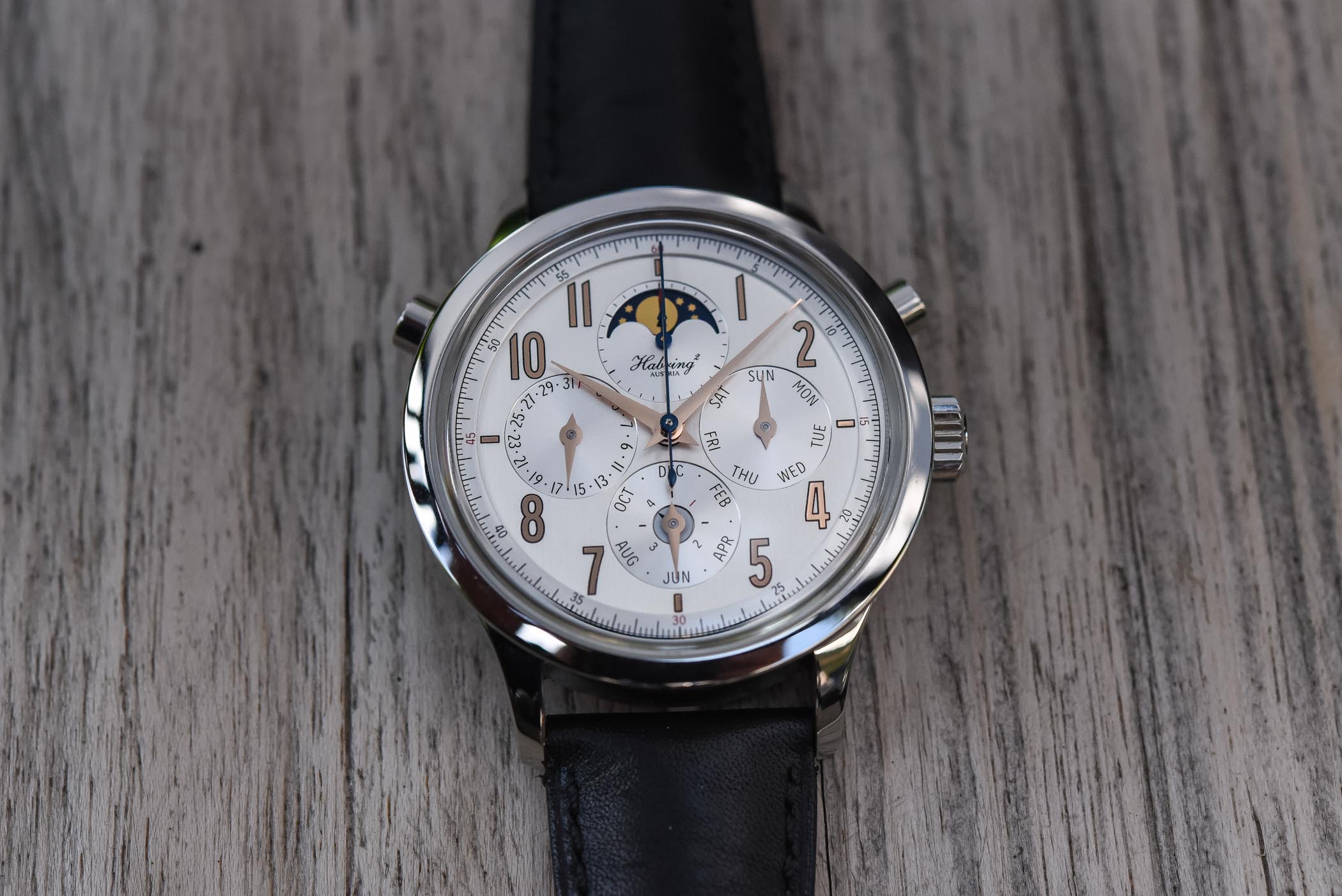
In 2004, an Austrian couple, Maria and Richard Habring, embarked on a surprising but successful horological journey by creating their own brand named Habring². Fifteen years is a relatively short period of time but has proved enough to accomplish their goal: to become a true Austrian watch manufacture, respected and capable of producing great watches. To celebrate this anniversary, Habring² are unveiling their most complex watch to date, a perpetual calendar topping the signature DoppelChronograph movement – Habring² obliges!
Background
Fifteen years aren’t enough to summarize the history of Habring². To understand where this unique, Austria-based watch manufacture comes from, we have to go back in time. Before starting his own brand with his wife, Richard Habring worked at IWC and was involved in movement creation. His main and best-known project had to do with a complex (understand expensive) complication: the split-seconds chronograph. Richard Habring’s task was to find a simple solution to create a rattrapante chronograph. At that time – in 1992 – IWC still relied heavily on externally sourced movements and, in the case of chronographs, this meant Valjoux 7750 ébauches.
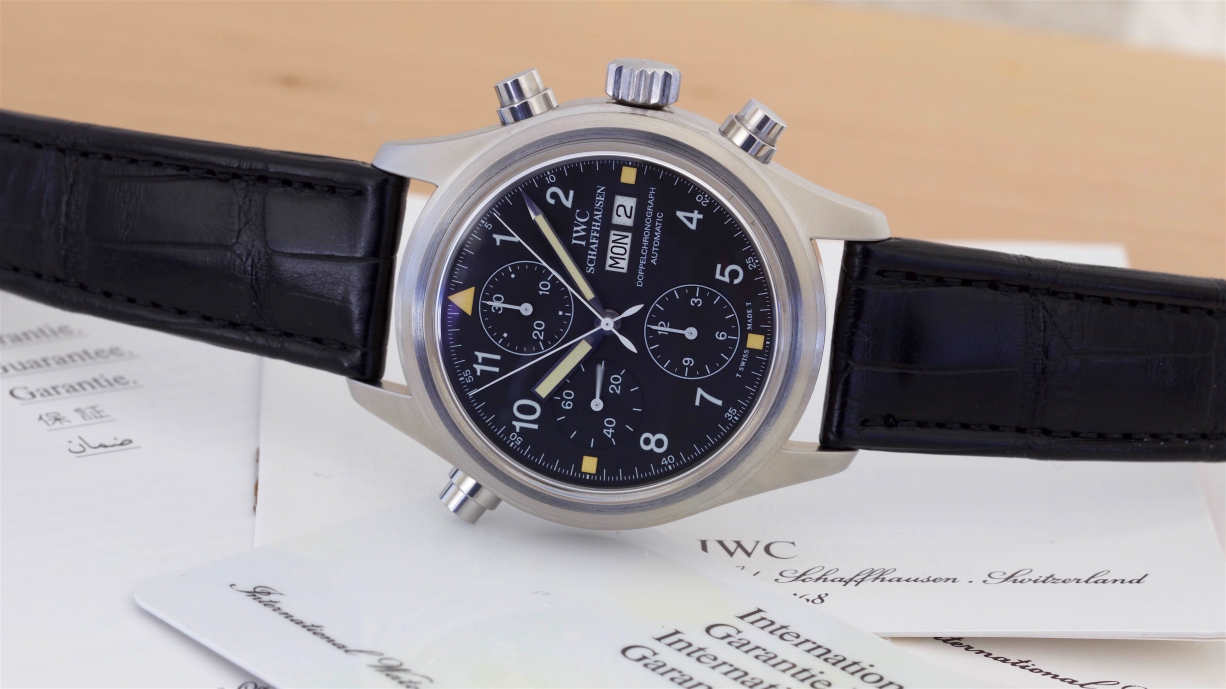
The main point of interest of this movement is well-known: it uses a simplified cam mechanism to activate the chronograph instead of a complex and hard-to-adjust column-wheel architecture. The genius idea of Richard was to add a simplified cam-operated split-seconds module to the already simple cam-operated Valjoux 7750. Reliable, simple to adjust and to assemble, using externally-sourced parts… The idea was so good that IWC patented it in 1992 and used it on several watches, including the Pilot Doppelchronograph (ref. 3711), the Portugieser Rattrapante Chronograph (ref. 3712), the Ingenieur Doppelchronograph, and the Da Vinci.
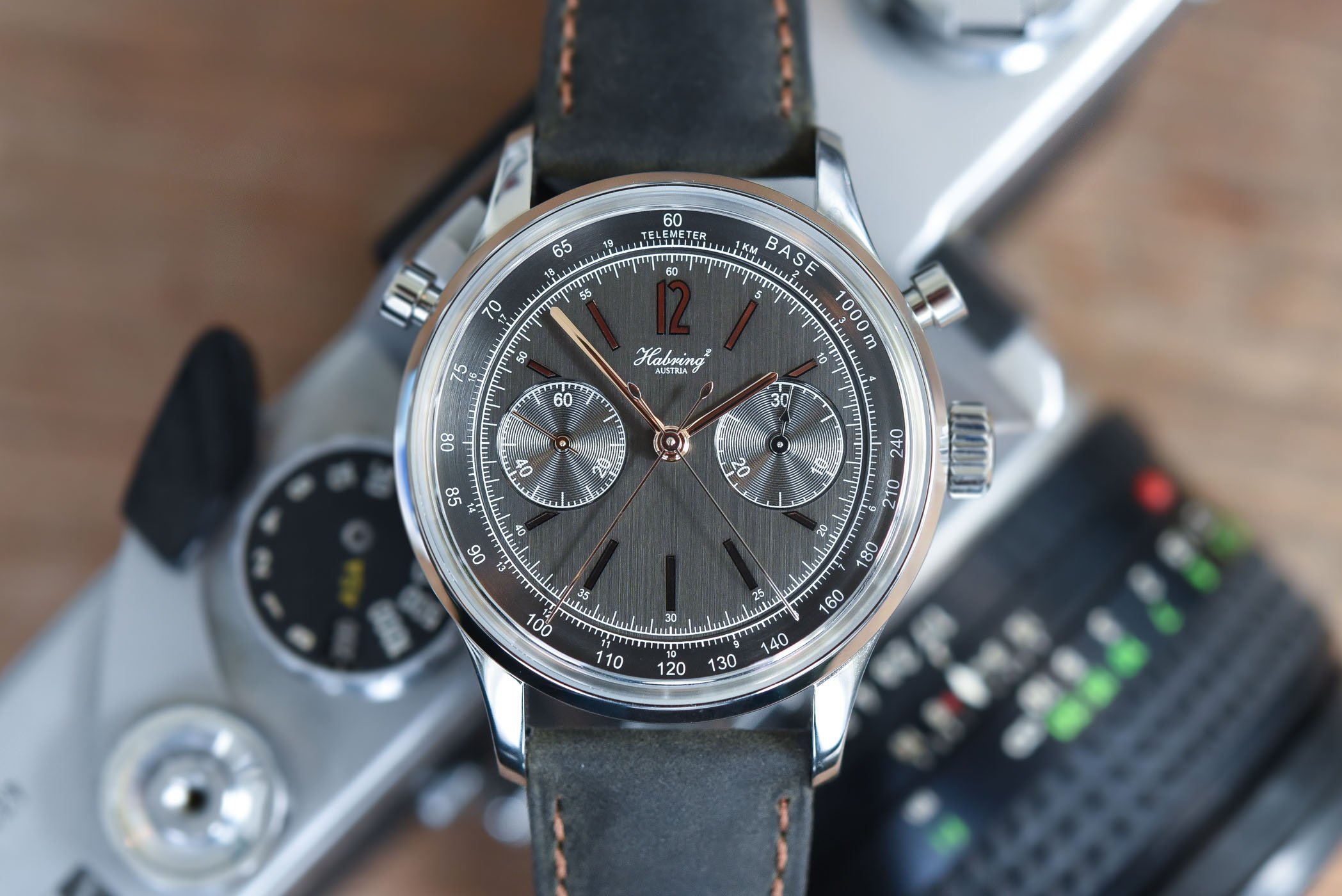
Richard Habring left IWC in 1996, yet the patent for this simplified Doppelchronograph was still in the hands of IWC. In the meantime (in 2004 to be precise), Richard created his own, Austria-based watch company with his wife Maria – hence the Habring² name. After twenty years, in 2012, the patent for this 7750-based cam-operated rattrapante expired and was not subject to copyright anymore. Richard was free to use his own creation again.
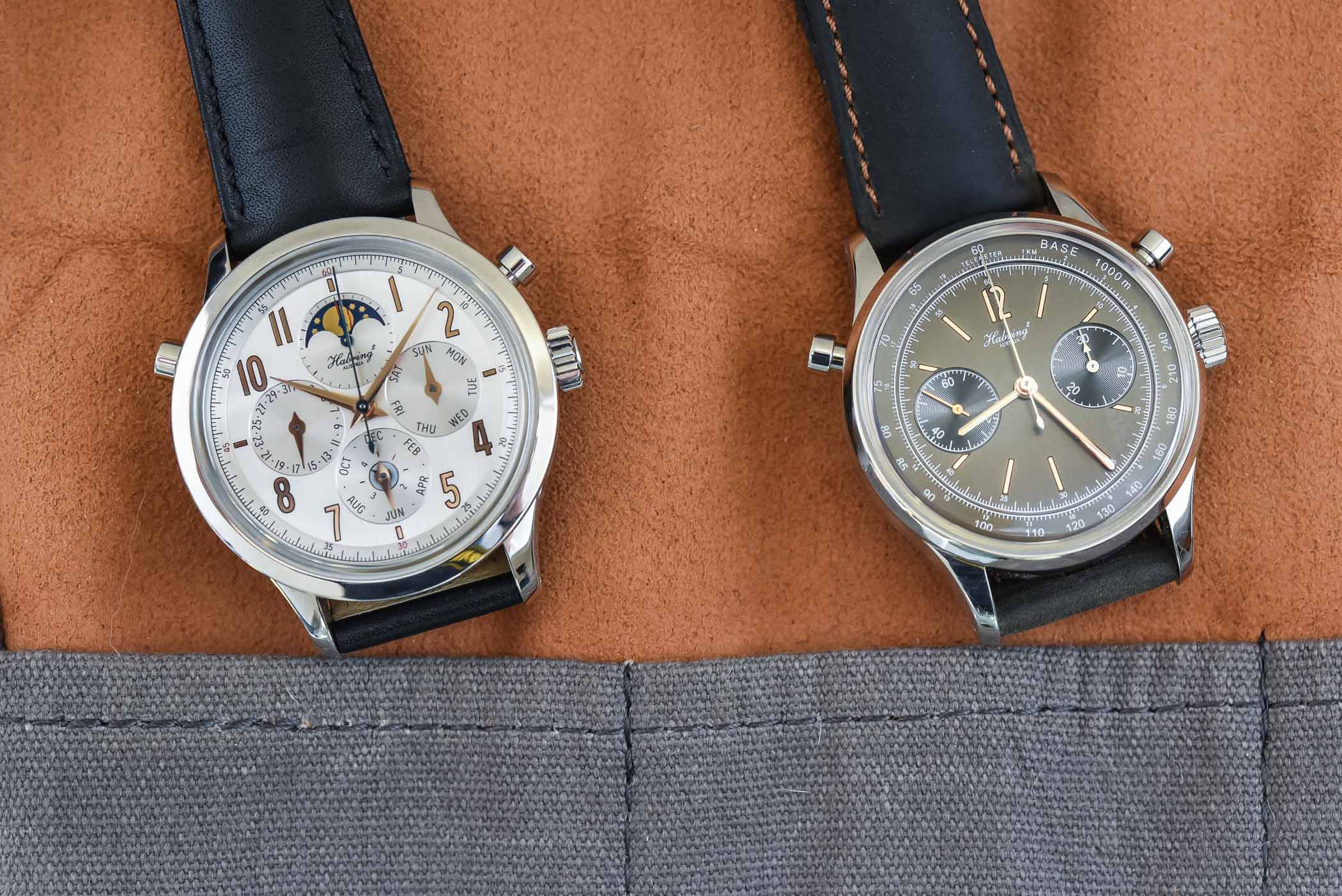
In a short period of time, Maria and Richard Habring were recognized by collectors and the rest of the industry by winning the “Grand Prix d’Horlogerie de Géneve” (GPHG, the so-called “Watch Oscars”) four times! Still, the main achievement came in 2014. To mark the 10th anniversary of the brand, Habring² introduced the calibre A11 and the “Felix” watch, an in-house modular movement that could be equipped with a dead-beat second, a monopusher chronograph, and, of course, Richard’s own cam-operated rattrapante chronograph module, with the Doppel Felix. And impressively, all of this was made internally by the brand, in Austria, or sourced from local suppliers!
The Habring² Perpetual-Doppel
To celebrate the 15th anniversary of their Austrian brand, Maria and Richard Habring have created their most complex watch to date, a perpetual calendar, split-seconds monopusher chronograph with an in-house movement. Something that sounds like an insanely expensive watch, admittedly. However, that’s a judgement that doesn’t take into account the couple’s ability to create complex watches at really competitive prices.
The concept with this new Habring² Perpetual-Doppel is pretty simple. Take the (arguably) much-loved Doppel-Felix and add another of the high-end complications, a perpetual calendar, on top. As you can imagine, it would have been quite difficult for a small company like Habring² to develop their own, in-house QP module, which is why they reached out to respected, Swiss-based module specialist Dubois-Depraz to source a reliable, adaptable module to be added on top of the in-house monopusher DoppelChonograph calibre A11R.
The display of the Habring² Perpetual-Doppel is an evolution of the classic Doppel Felix, which has been simplified to meet with the complex indications of the QP module – two of Maria and Richard’s golden rules are reliability and suitability for everyday use. Thus, for the chronograph part of the watch, only the two, centrally-mounted seconds hands were kept, together with the 30-minute counter positioned at 12 o’clock – you can guess here at some of the 7750 pedigree. No more small seconds, no 12-hour counter.
The rest of the sub-dials, 4 in total to give the watch some balance, are dedicated to clean and legible calendar indications: date at 9 o’clock, day of the week at 3 o’clock, month and leap year at 6 o’clock and moon phase (inside the 30-minute counter) at 12 o’clock. Classic, not too cluttered, still legible and overall, well-proportioned despite being an externally sourced module.
The rest of the watch remains very familiar. For instance, the dial of the Perpetual-Doppel is in the classic Habring² style – found on Felix, Erwin, Chrono-Felix or Doppel Felix – with a silver-brushed background and rose gold-coloured Arabic numerals. The sub-dials are sunken and the hands are diamond cut, rose gold-plated for the hours and minutes and the calendar indications, and blued steel for the chronograph functions.
The case of the Habring² Perpetual-Doppel is also familiar and is based on the one found in Doppel Felix, however slightly larger and thicker due to the integration of the perpetual calendar module. The watch measures 43mm in diameter and 12mm in height (quite thin for such a complex watch).
Inside the case and topped by the Dubois-Depraz module is the in-house A11 movement, here in its A11P version. The base is the same as Doppel Felix, a hand-wound, monopusher, split-seconds chronograph with Richard’s own rattrapante mechanism on a movement derived from the 7750 architecture, yet now designed/produced/assembled/finished internally or thanks to local (mostly Austrian) partners.
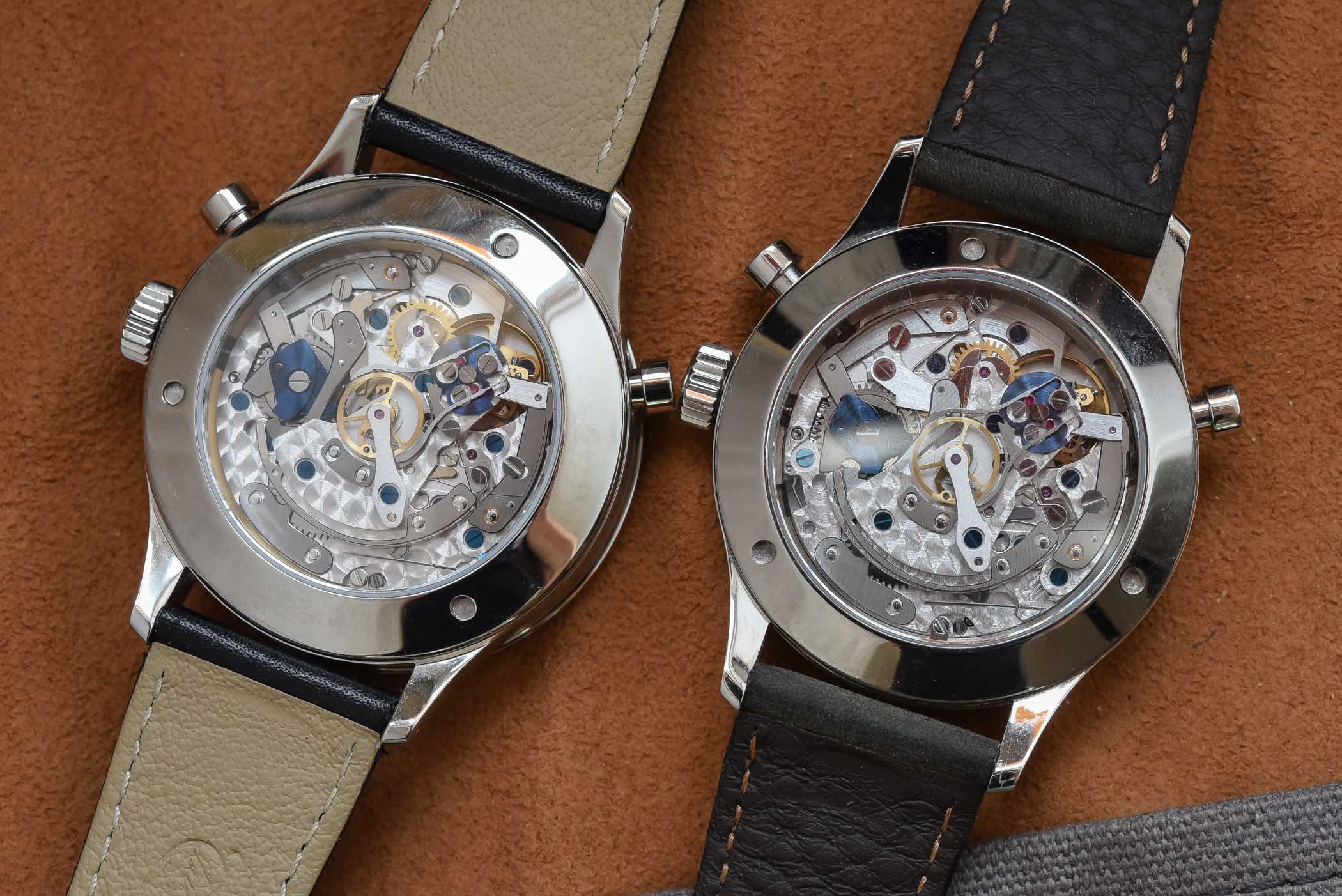
The A11 calibre uses an anti-magnetic escapement as well as a KIF anti-shock system (usually Incabloc on Valjoux) as well as the manual assembly of anchors, the counting of hairsprings and the manual production of movement wheels. As for the specifications, nothing very surprising here with its 4Hz frequency and 48-hour power reserve (even though Habring uses a different mainspring). Overall, if the roots of the 7750 are still present, the calibre A11 is a widely improved version, with evolutions and upgrades on most parts. Also, the finishing and decoration are much more pleasant than a standard 7750, with hand-polished bevels, decorative grinding or perlage.
In addition to the classic silver/gold-coloured dial photographed here, there will be blue and copper versions of the Habring² Perpetual-Doppel. The watch is now available to order, at a price of EUR 21,500 – which certainly is the most accessible split-seconds chronograph perpetual calendar watch on the market, by quite some margin. And you hardly can beat the cool-factor of Maria and Richard’s story! Happy 15th-anniversary Habring².
More details at www.habring2.com.

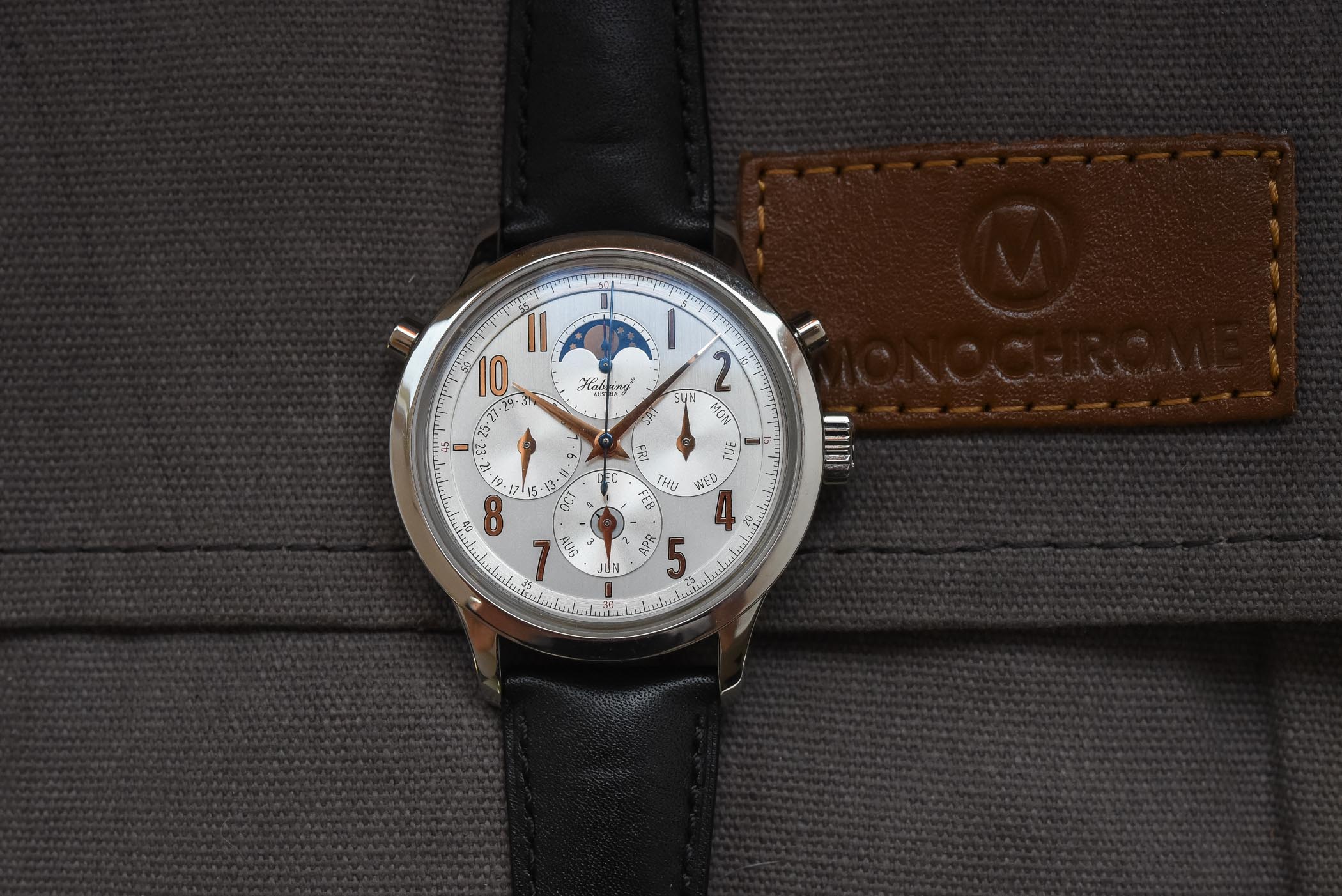

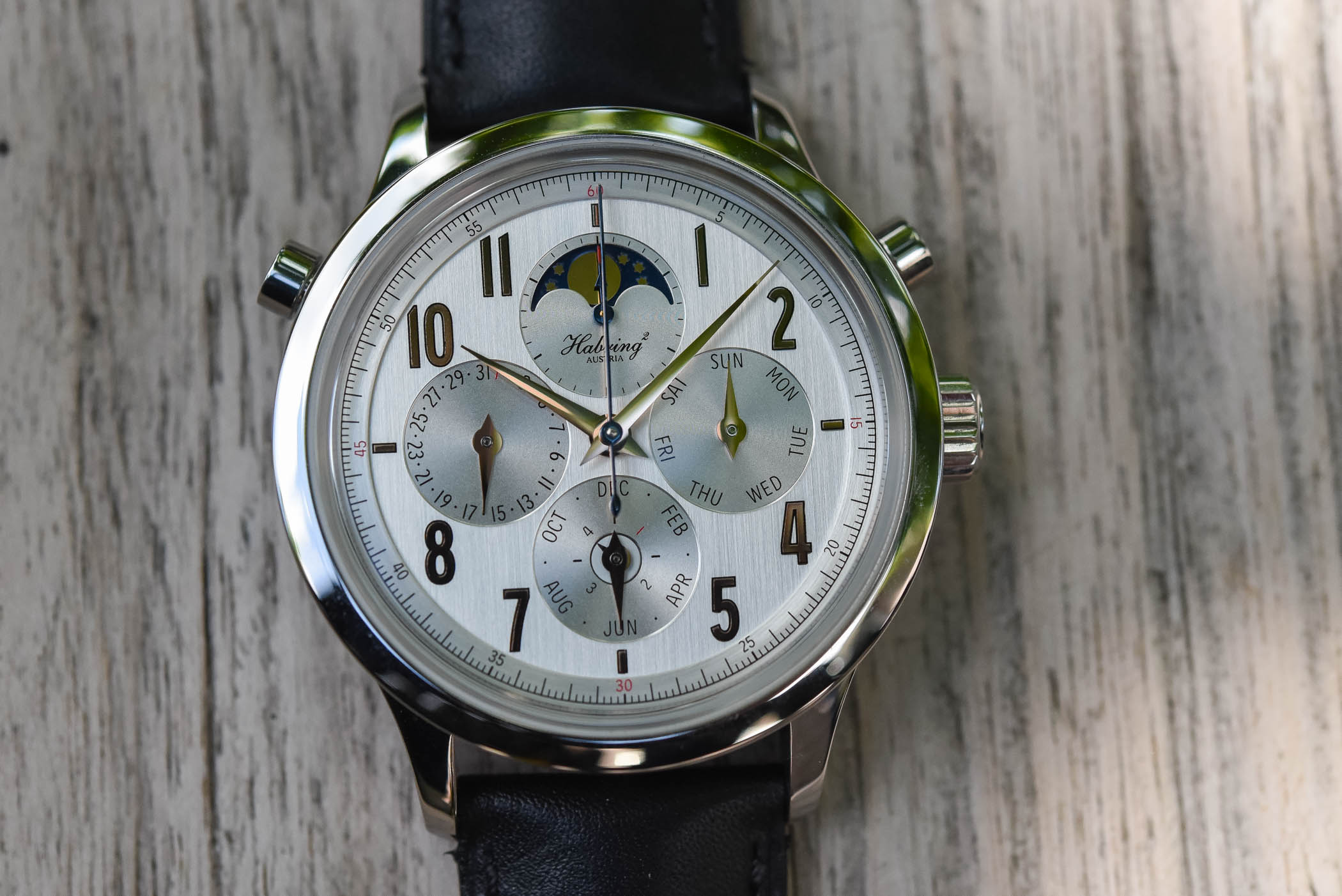
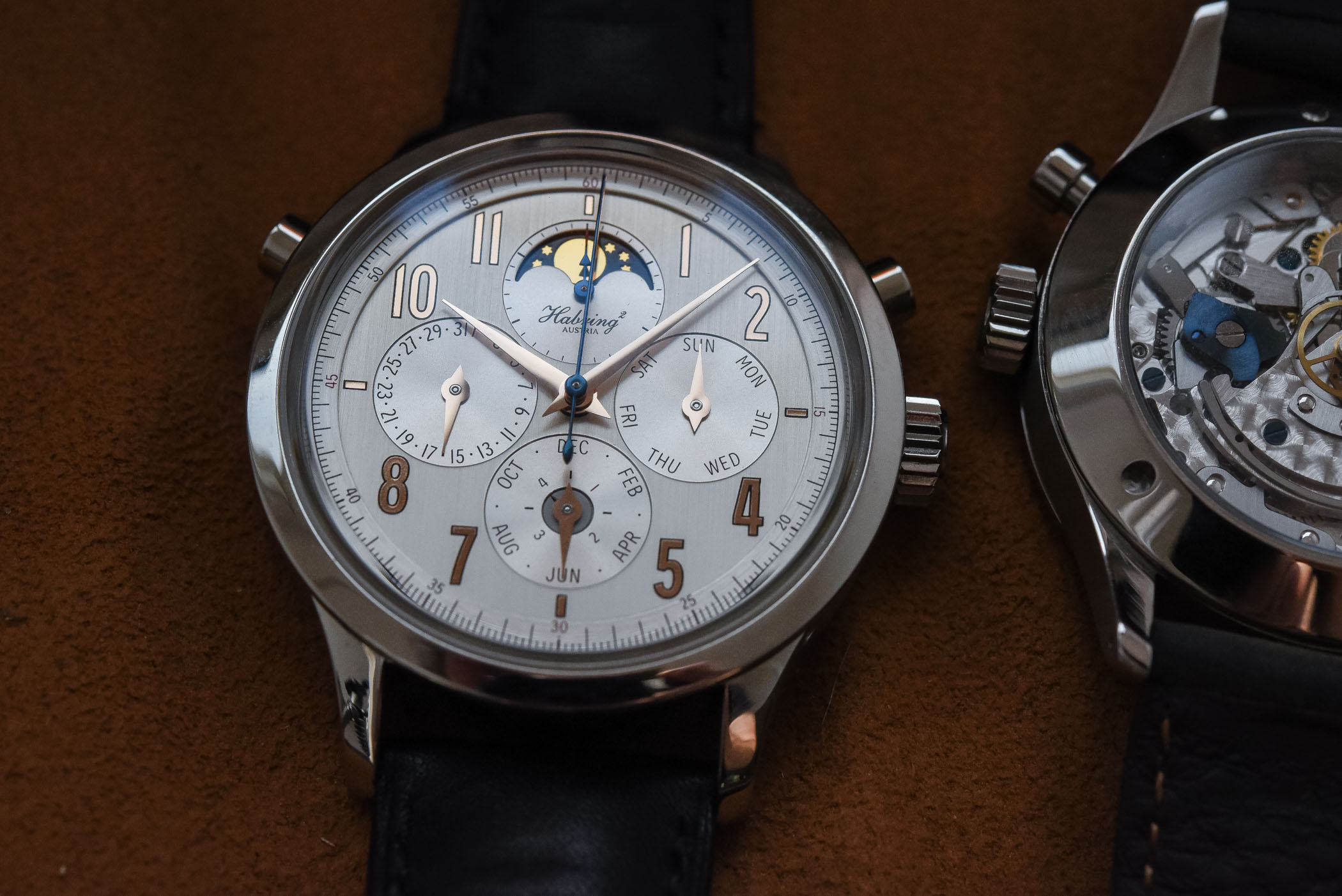
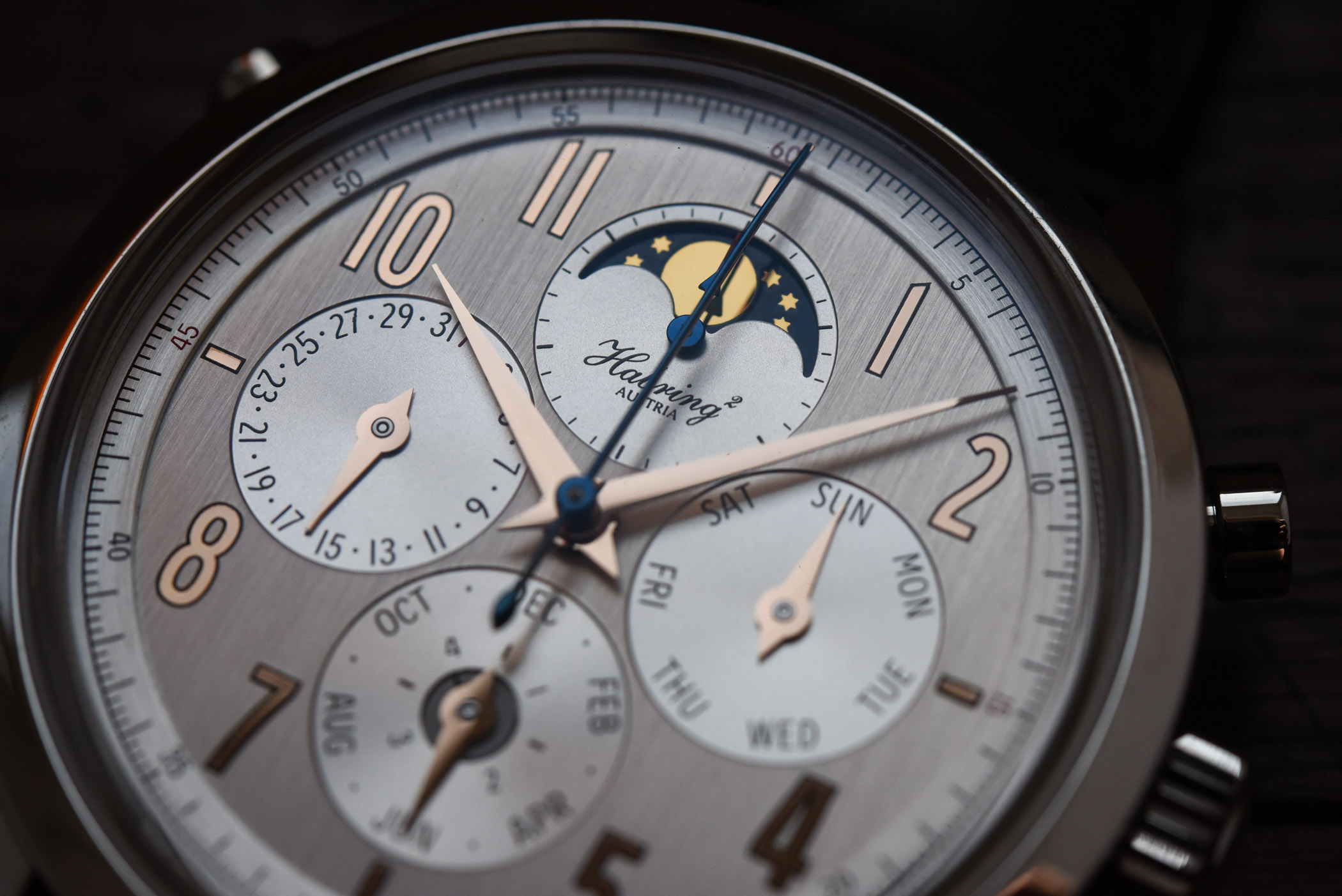
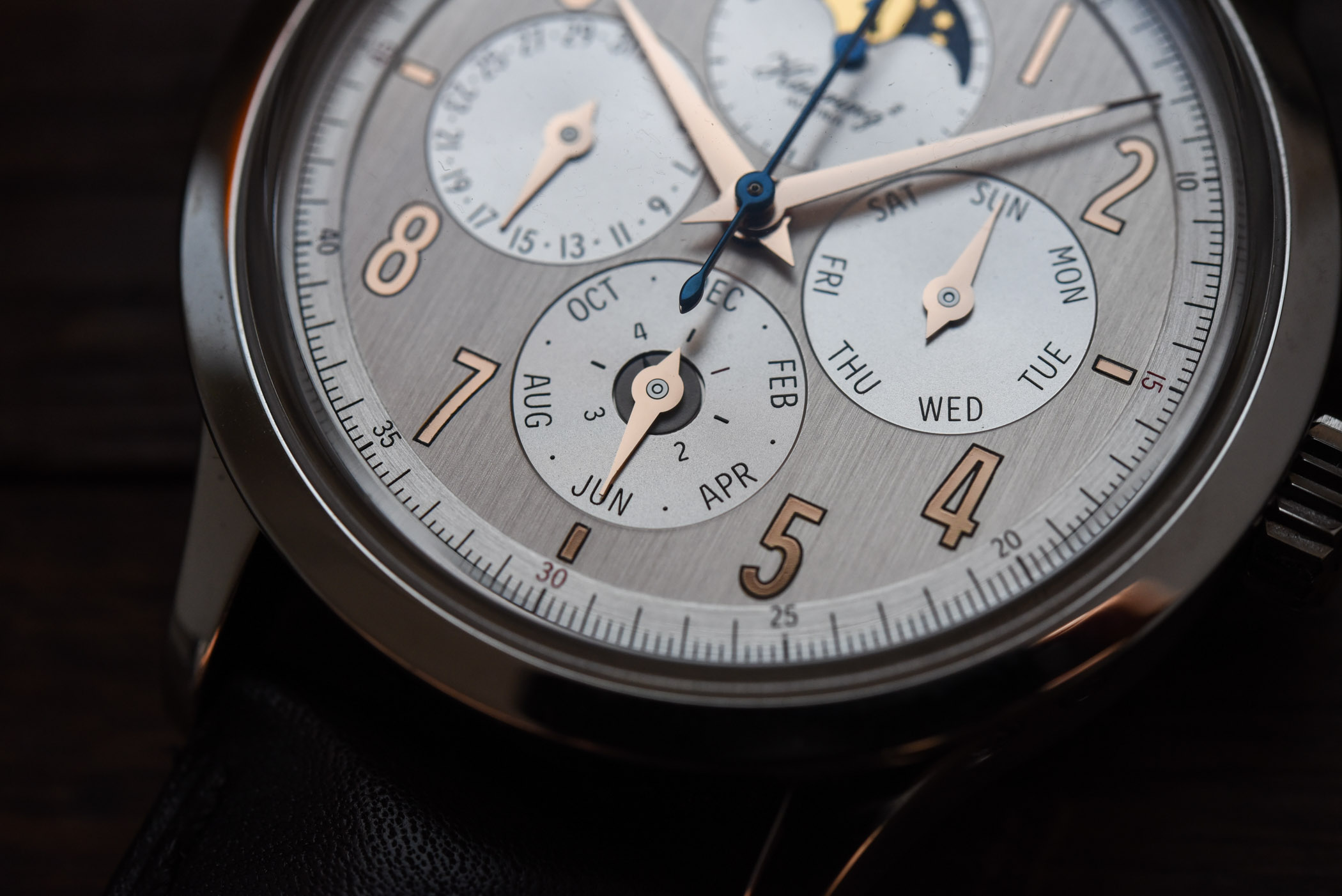
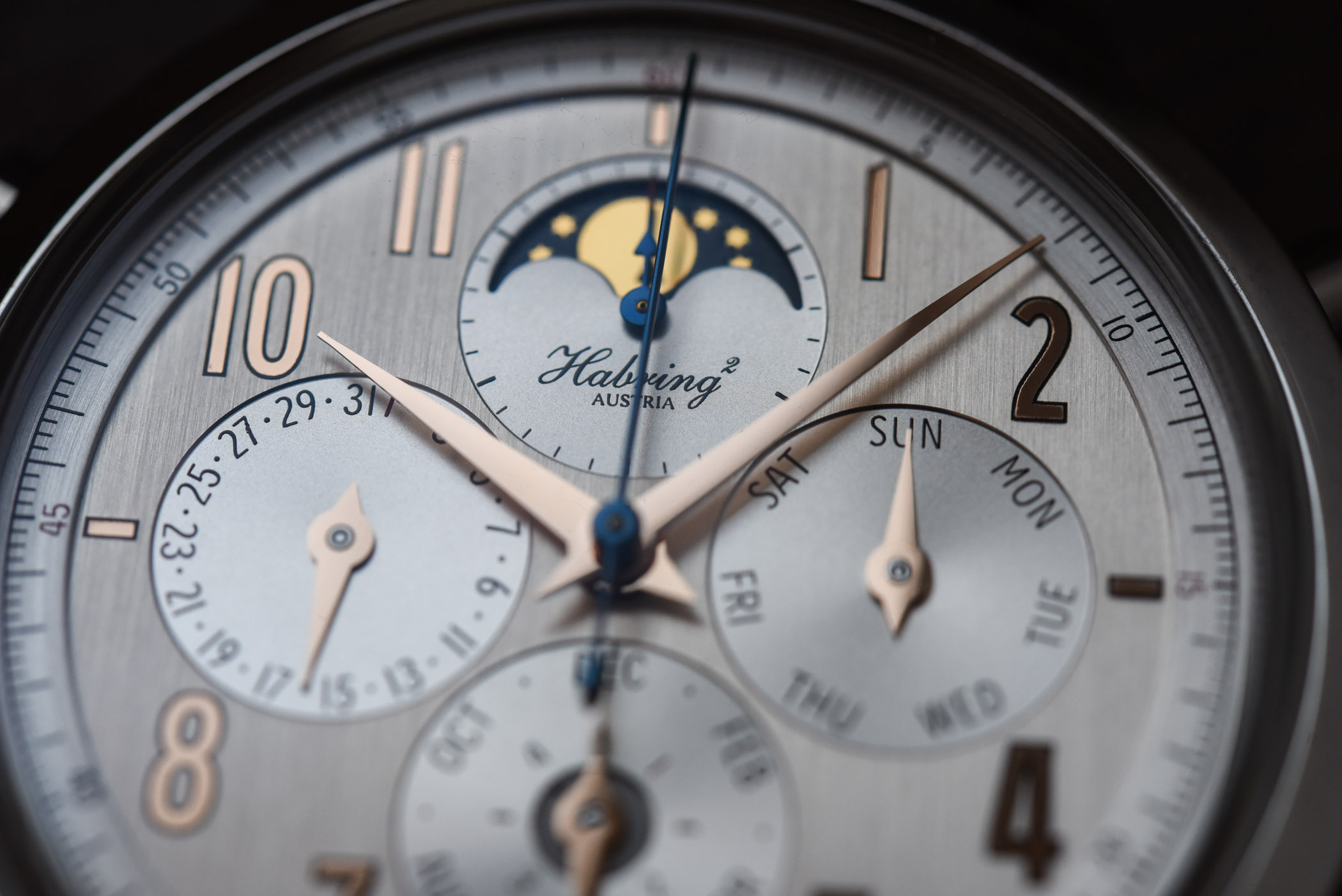
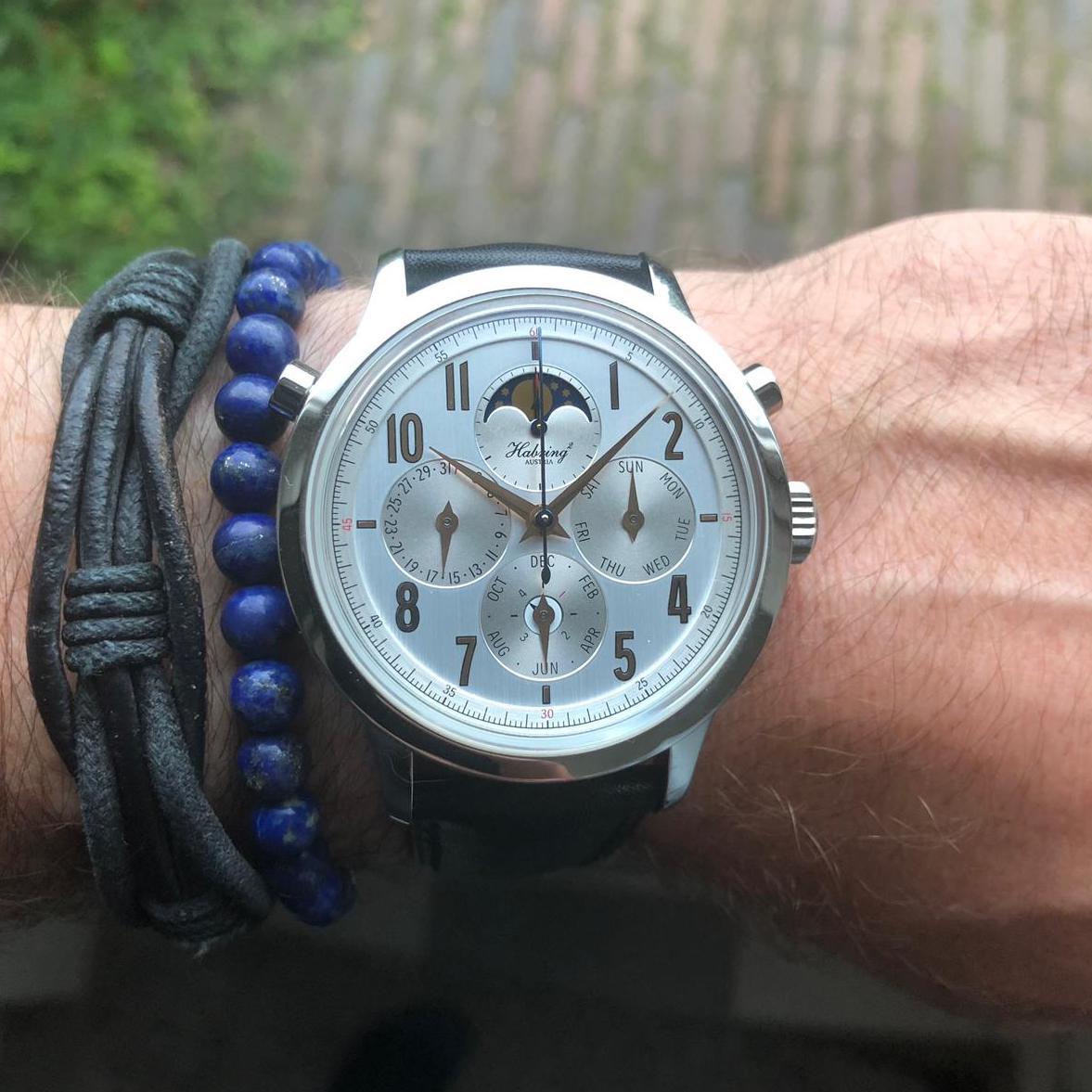
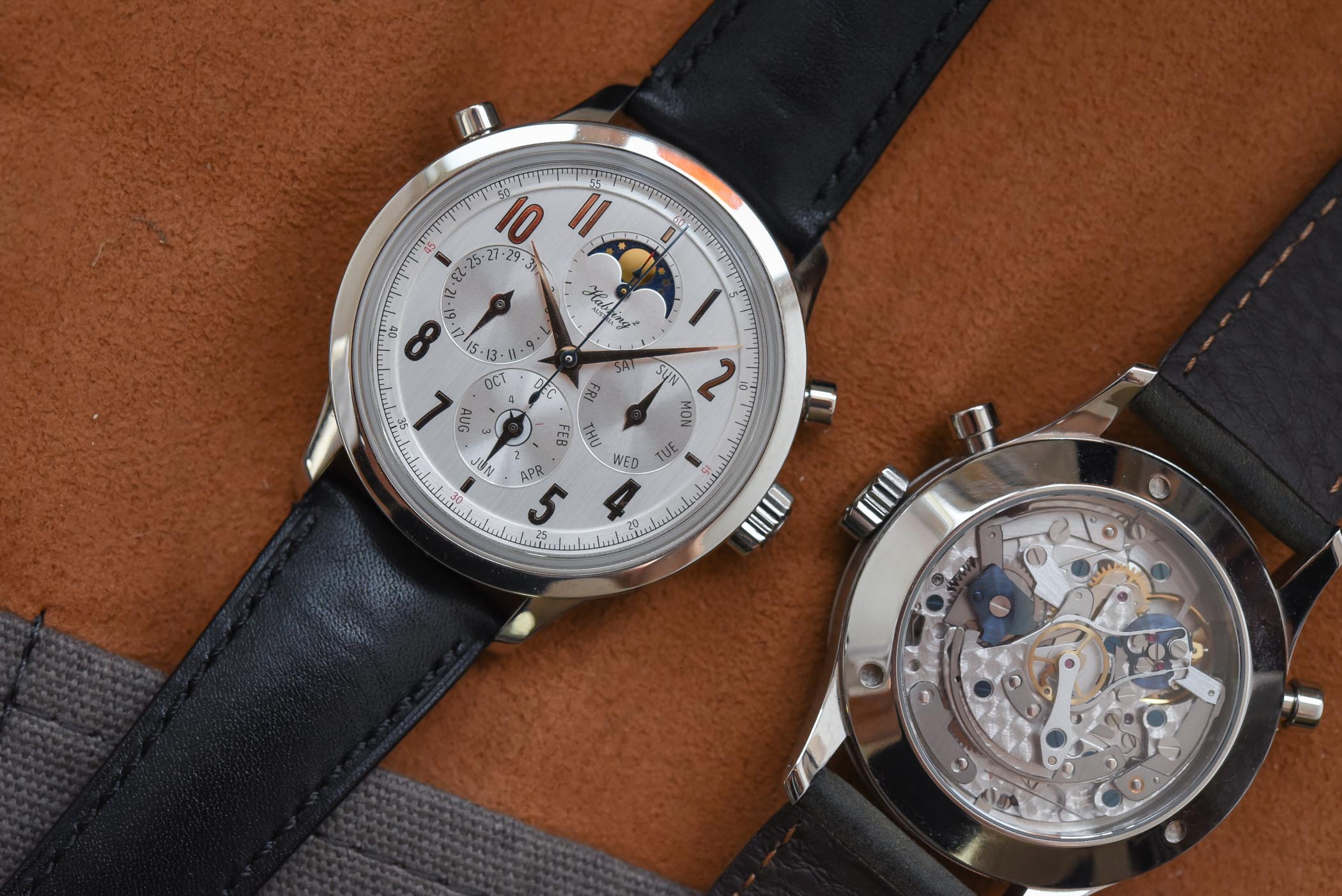
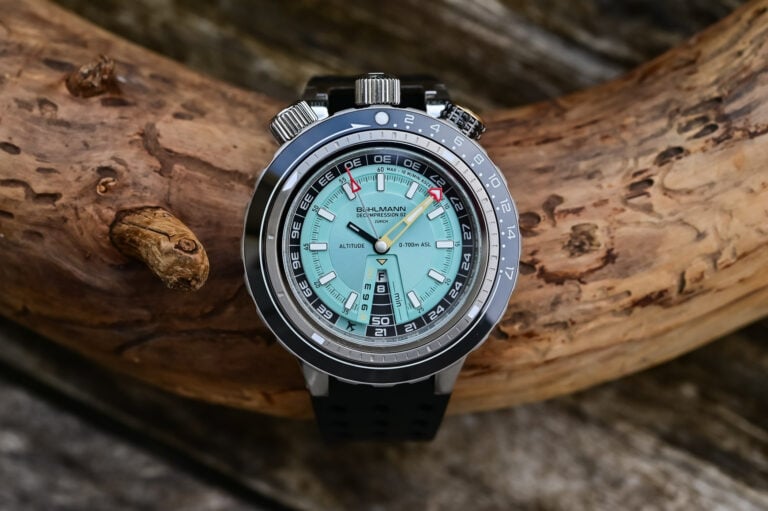
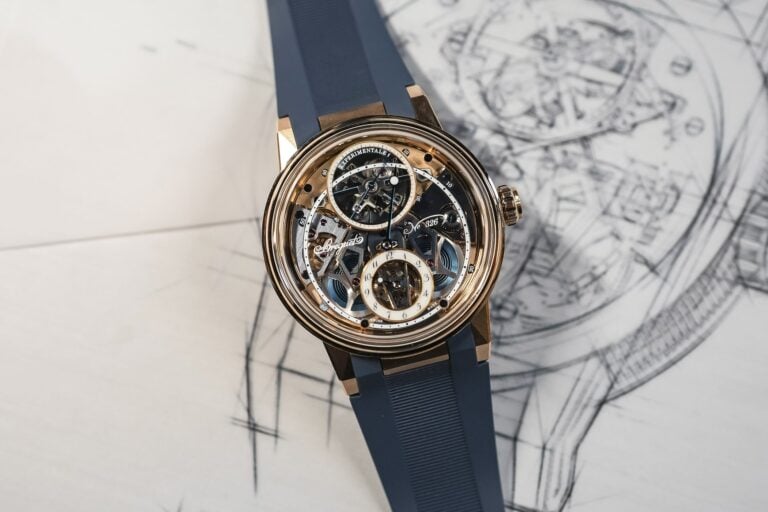
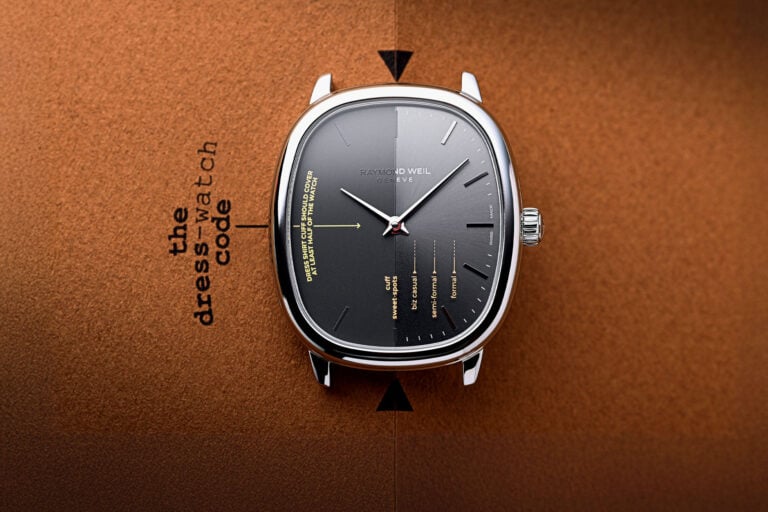
2 responses
I like Habring watches a lot, but that one is too busy, too big and too pricey…
~ EUR 21k is a bargain for the sweet chemistry of mechanical mastery.
But…
48hr power reserve, for a hand-wind, is on the cusp of being a nuisance (if not irrational). Invariably there is a tolerance on the reserve (excluding extensive use of the chronograph – that will almost certainly have an effect), so sync-ing a routine of every 2nd day, could catch you with the watch running out of steam. Doing it every day will wear components in the long run. With a watch collection, auto watches can live on winders, manual however requires personal attention; just makes sense to have a reserve with a margin over 24 hr multiples (eg an honest 50hrs plus).
For a perpetual calendar to run ‘flat’ sort of defeats the object – in a paradoxical way…